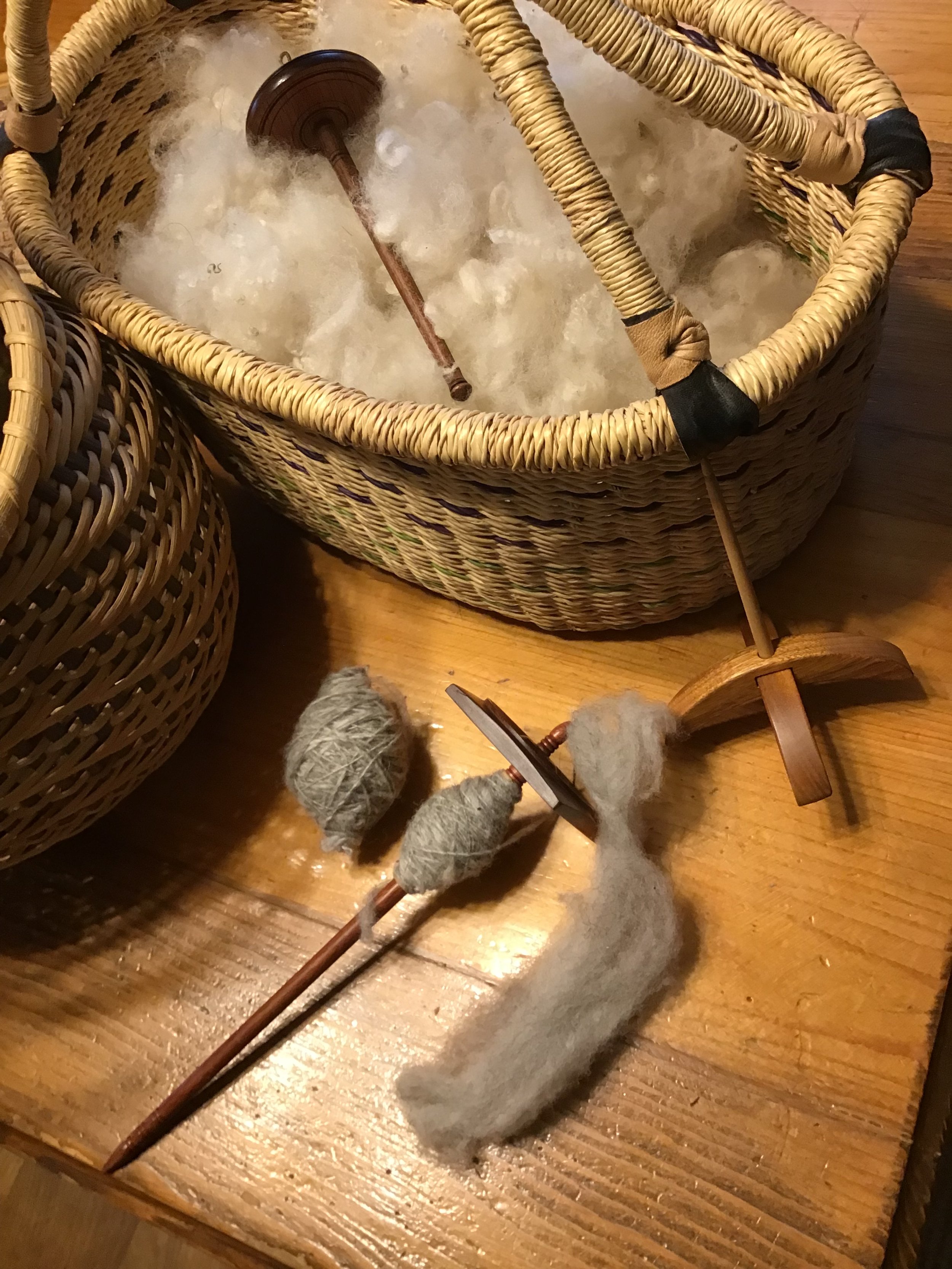Thursday Tip & History of Hand Spinning
Thursday Tip & History of Hand Spinning // Where do thread and fabric come from?
Drop Spindle with MB wool
When making clothing from scratch, most of us start by buying fabric and thread. Today, textile workers mass produce these supplies in factories. However, before the Industrial Revolution, sewing wasn’t the beginning of the process.
First, one has to grow the fibre: cotton, silk, linen, wool, alpaca, cashmere, etc. Then, it has to be processed for spinning. Hand spinning fibre into thread or yarn comes next. Yes, many still spin thread and yarn by hand, even today. Historically, until the Medieval period (roughly 1000-1500 CE, scholars disagree about exactly when), all yarn was spun, by hand, on a spindle. At about this time, depending on culture and geography, spinning on a spinning wheel became possible, possibly first in Asia.
The first people, thousands of years ago, figured out how to twist fibres into yarn to clothe themselves. All the linen mummy wrappings in Egypt were handspun on drop spindles. The famous European tapestries hung in castles? Yes, people spun the yarn for these on spindles, too. The common gendered assumption is that women spin, and men wove. This isn’t the case. Like everything else, it was dependent on the society and geography of the region. It takes many hand spinners to supply a weaver with enough yarn to produce yards of cloth. People wore clothing and needed bed linens and household items. In many cultures, everyone carried a spindle and spun as often as possible to produce thread or yarn. Children started spinning early and helped make yarn for their households.
While spinning wheels were a big technological advance, the adage is that they are “faster by the hour, slower by the day.” To spin at a wheel, one sits or walks back and forth. The spinner is stuck in one place. Shepherds in the fields, women raising children, or people walking to market far away could all use spindles to produce yarn as they moved. In some places, spinning wheels never caught on, and you can still see people spindling.
In Manitoba, early bankruptcy legislation suggested that a spinning wheel was among the necessary personal property that couldn’t be confiscated. That means some European settlers, 150 years ago, were still spinning to make their knitted or woven fabric and clothing. While others could purchase fabric curtesy of the Industrial Age? It hadn’t yet reached Manitoba.
Today, there are still hand spinners who use spindles and spinning wheels. Spinning offers creativity and control over the finished project, just as sewists find. We spin yarn for knitting, embroidery, weaving, crochet, rug hooking and more. There are as many reasons to spin as there are spinners!
Manitoba has an active fibre arts community. To find out more, start with the Manitoba Fibre Festival. To learn to spin, you can take group lessons at Wolseley Wool and Wool Mountain to start. I also occasionally offer workshops and offer support to spinners. To learn more about the history of spinning, check out the many resources available at the Winnipeg Public Library.
If you’re sewing with knits or woven fabrics today, it’s most likely it was factory-made by machine. Using hand spun is a special experience. Handmade yarns, threads and fabrics have a lively texture and soul to them. Handmade materials are precious and expensive. Next time you pick up fabric, imagine starting with growing the cotton or raising the sheep! Then, spinning and weaving the fabric, too! What’s fast or slow fashion? It’s all relative.






